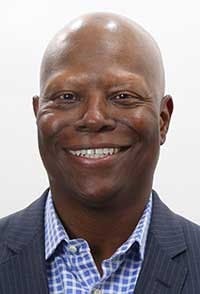The Data Center Frontier Executive Roundtable for the fourth quarter of 2016 features insights from industry executives with lengthy experience in the data center industry. Here’s a look at the insights from Rick Crutchley of IO.
RICK CRUTCHLEY of IO.
Rick Crutchley serves as Chief Operating Officer of IO and is responsible for developing, managing and executing the Company’s sales & operations strategy. Crutchley is a 16-year data center industry veteran, focused on building global sales & operations teams, optimizing the customer experience and attaining annual sales and revenue targets. Upon joining IO in 2011, Rick was instrumental in providing best practices as business growth exceeded 30 percent year-over-year for three consecutive years. Crutchley previously served as the Vice President of Global Sales for CoreLink Datacenters as well as the Chief Operating Officer for CyberTrails, a national provider of IT services. He was also the General Manager and Director of Western Operations for Inflow, which was acquired by SunGard in 2005. Crutchley is a board member of the Arizona Technology Council and Fresh Start Women’s Foundation. He is also actively involved in the CEO Forum and Arizona Business Leadership Association.
Here’s the full text of Rick Crutchley’s insights from our Executive Roundtable:
Data Center Frontier: What will be the key trends that will shape the data center industry in 2017?
Rick Crutchley: The key trends that I believe will shape the data center industry in the coming years are going to be the continued growth in Big Data and the Internet of Things, more adoption of public cloud by enterprises driving complexity for IT departments, and hybrid cloud where enterprises balance workloads across private and public cloud.
Analytics are also going to play a big role as enterprises are currently leaning on their IT departments for an analysis on data in order to understand consumer buying trends.
Data Center Frontier: There are signs that cloud technologies are gaining traction in the enterprise sector. How is this affecting the balance of the deployment of enterprise workloads between on-premises facilities, service provider data centers, and public cloud platforms? What will this look like in 2017?
Rick Crutchley: The number of platforms that enterprise IT is supporting will increasingly include public cloud. This will become challenging to manage and more and more complex. On premise infrastructure will continue to grow and stretch the capability of the IT department to manage it.
My opinion is that the IT department will still want to manage as much as they can on-premise, so a hybrid approach between on premise, service providers/colocation, and public cloud platforms will be very common in 2017.
Providers are making it easier to move and balance workloads across public and private infrastructure. Hardware vendors are leveraging public cloud technologies in their products to enable clients to utilize the benefits of the public cloud while not giving up the control and security they get by having the infrastructure on site.
Data Center Frontier: How is the pricing and availability of renewable energy impacting your data center business? Are customers being more specific about what types of green power solutions they are seeking?
Rick Crutchley: There are growing demands and requests from enterprise customers for cost-effective clean energy to power their data centers. By aggregating the energy use of customers, a provider can apply scale efficiencies to data center operations and renewable energy procurement. Our goal is to provide customers with the best available options for reliable, renewable, and affordable energy.
Customers are inquisitive in terms of what options are available to them with regards to green power. We have an agreement where customers can opt-in to receive access to clean power generated by wind and solar plants at an incremental cost. This provides both access to renewable energy and price certainty, which has a financial benefit for IO and our customers.
Data Center Frontier: What’s the state of modular data center solutions in 2017? What do you see ahead for these solutions?
Rick Crutchley: The next step in modular data center solutions is what is referred to as Edge computing- smaller data centers placed closer to end user for improved availability and latency.
According to Markets and Markets, the worldwide market of modular data centers will most likely grow from $8.37 billion currently to $40.41 billion by 2018. This is tremendous growth, and that is where we see the Edge computing coming into play to help with that growth.
